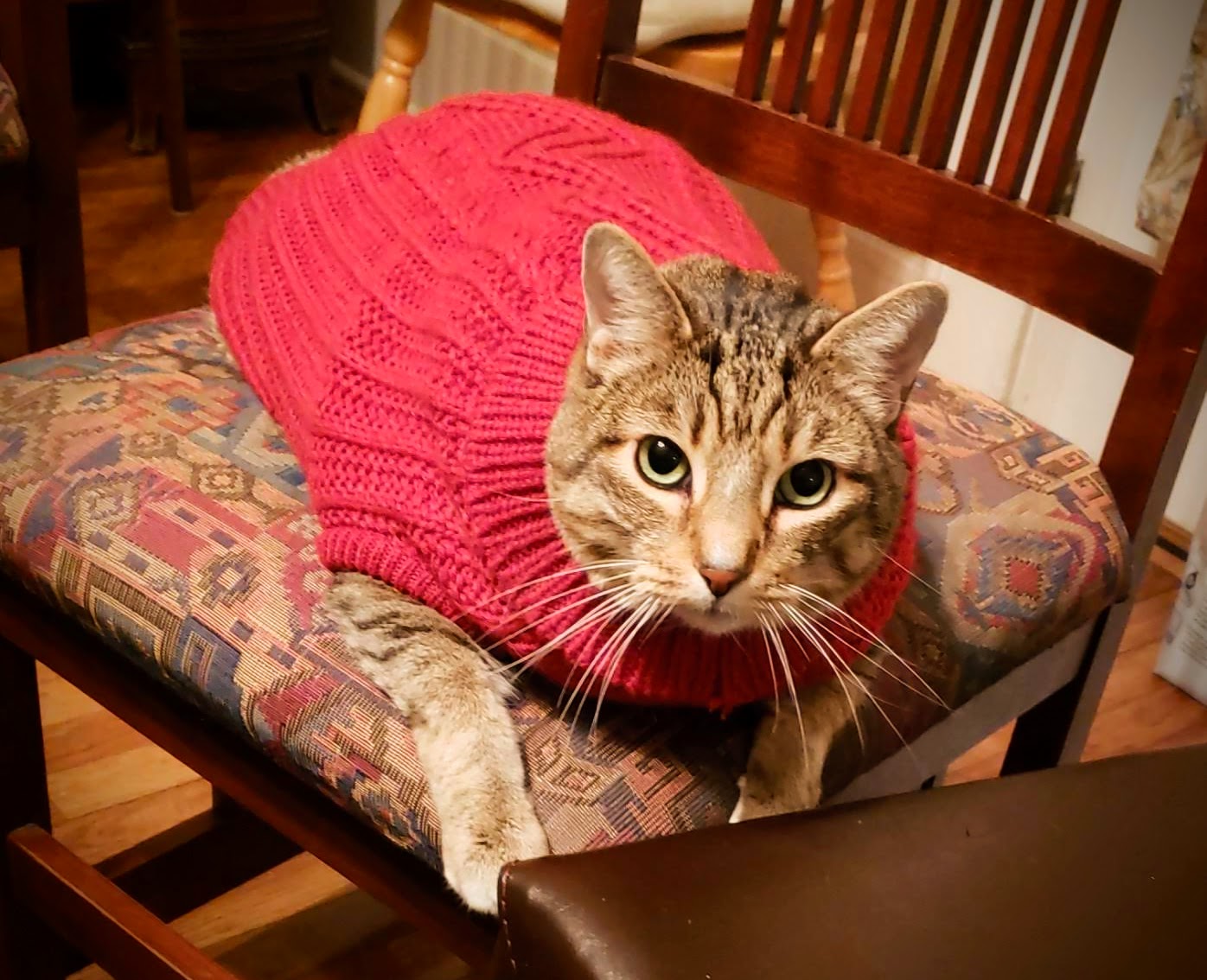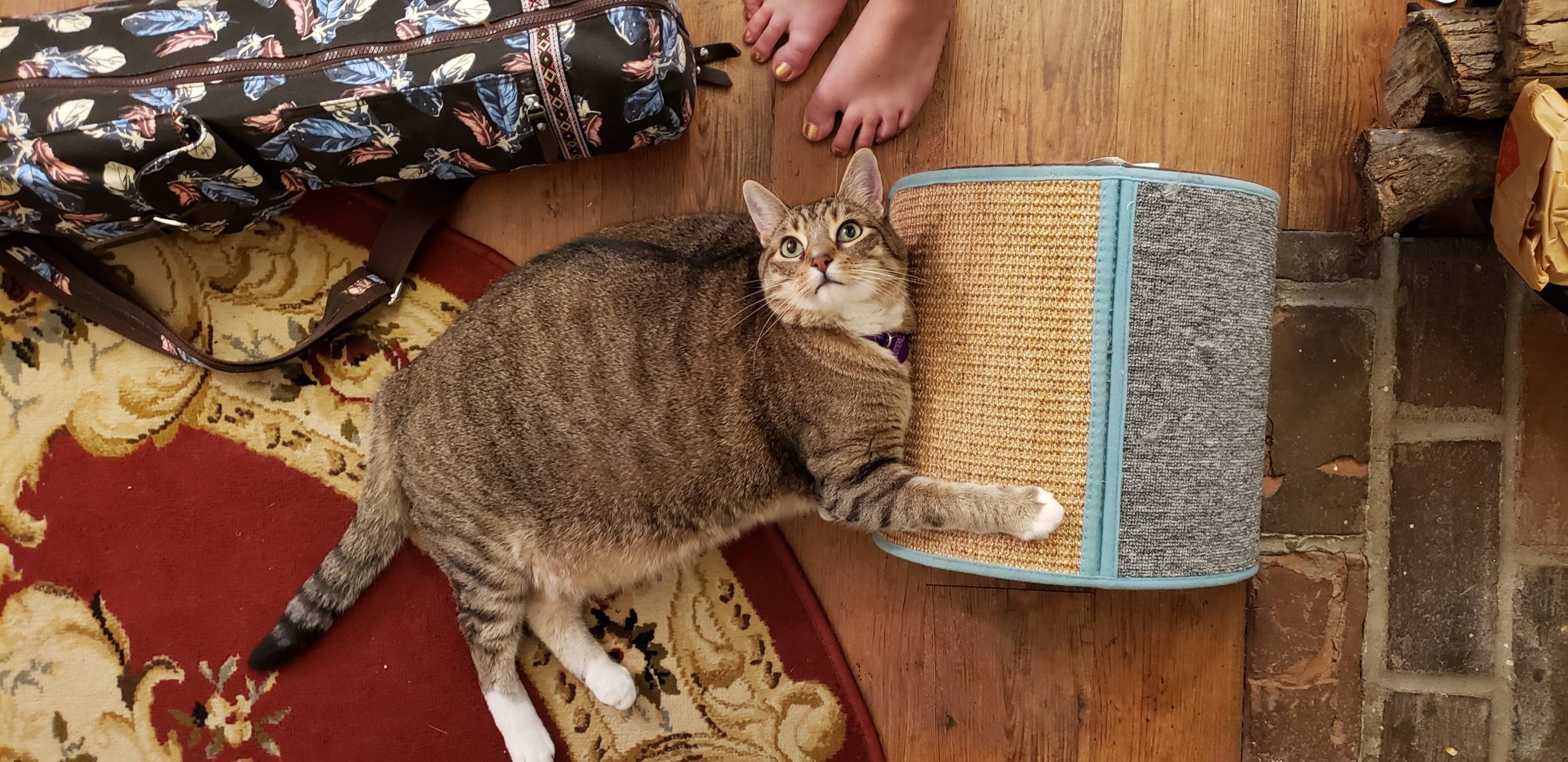If you haven’t yet been introduced to the wonderful concept of hygge, then allow me to usher you forth into that delightful realm. Hygge is the Danish concept of well-being and comfort. It’s what they use to get themselves through their long, dreary winters, and also to add joy to the rest of the year! The Danish traditions center around coziness, company, and candles. What does this have to do with advice for cat parents new and old? Picture your stereotypical cat, curled up in front of a fireplace. Hygge. Cats are natural connoisseurs of hygge. They appreciate the fine life of comfort and warmth and good company (their definition, of course). So, even if you’re somehow not sold on hygge for yourself, try getting hygge for your fancy feline friend!
A Hygge Cat
Cat hygge does of course vary slightly from the human form. (Notably in the candle department: most cats aren’t the best of friends with candles, not only in the open flame department, but also in the scent department, if you’re using scented candles.) Cats need a comfortable environment on their terms. This means feeling safe and being provided for, with all their needs met.
Hiding Spots
In addition to the placements of food and water and litter that we’ve previously discussed, cats need a safe space to hide when they feel the need to. It can be annoying when you pull out the carrier to take your cat to the vet (for example) and she suddenly disappears, but the solution is not to get rid of her hiding spots altogether. Rather, the solution is to curate these hiding spots. Know the kinds of places she likes to go to hide, and provide her with a selection of these. The key is knowing the spots where she might be, and making sure that in a pinch she’s still accessible to you.
If she’s an under-the-bed hider, try to get a bed with just enough clearance (or get risers for the legs) that you can reach under it. If she prefers closets, make sure that there aren’t corners that you can’t reach. And if she hides on top of the fridge, have a stool nearby that you can stand on. Basically, know where she might be, and be able to reach that spot.
What makes a good hiding spot? Cats naturally tend to go up to look for hiding spots. They also prefer a small place with more than one escape route, like under beds. Your cat might also like to have a spot where he can see without being seen. This would be a spot that’s not in a remote part of the house (like true hiding spots), but somewhere that he can just take a break from the noise and action. Mr. Butters likes to use pushed-in chair seats at the dining room table for this. There, he can still see and hear what’s going on, but he’s pretty well hidden.
Hygge Accessories
Because you’re a Good Cat Parent, you probably want to get some awesome accessories for your kitten. What makes a Hygge Cat Accessory, though? Are there cat candles? (No.)
Your best bet is a soft, fluffy cat bed. Some cats don’t go for these, but most will. Find a bed with three higher sides and put it in a spot out of the way of main footpaths but not completely out of the action. If your cat doesn’t go for this, try changing up some elements: in a warmer spot, with lower sides (so he can see out), or less fluff. If you have multiple cats, watch to make sure they’re not fighting over cushion space, and if they are… I don’t know, I just have one cat. Good luck.
The other obvious accessories are blankets and sweaters. Many cats like burrowing under blankets. If your cat is among this population, make sure you check for catlumps before flopping down on a blanket. Fewer cats are fans of sweaters. Hairless cats like the extra warmth, but don’t be surprised if your fluff-haver prefers to be in the nude. Go ahead and try that sweater out, but don’t force him to wear it.

Hygge Company
This part can get a little hairy. Different cats have different company preferences. Some like to have another cat around, some do not. Some are good with children, some prefer a single adult and no more. However, very few cats don’t like company at all.
If you’re introducing a new member into your household, make sure to do it gradually and give your cat (or cats!) places to take breaks from the newness when they need to. Let them maintain their hygge as much as possible. Unfortunately, we can’t always provide the right home environment for our cats. Families sometimes find, after having children, that their feline companions aren’t fond of the urchins. Figuring out what to do in these situations is, let’s say, difficult.
When Hygge Goes Missing
How can you tell that your cat isn’t happy? First, you have to know your cat’s baseline behavior. Problems are often revealed by changes in behavior: hiding more, less sociable, loss of appetite. Inappropriate urination is also a big sign of problems.
Cats instinctually hide their pain. This is why it’s important to be familiar with their normal behavior, so you can notice more quickly when something changes. That’s not to say that every change means something bad: cats go through moods too. But keep an eye on patterns and variances just the same!
Thinking Hygge Cat Thoughts
A hygge cat is a happy cat! While we (as non-Danes) don’t always think very much about hygge concepts, they are quite important for having a happy cat. You might also find that, when thinking about hygge for your cat, you start adopting some hygge for yourself as well! (Bonus!)
If you haven’t already checked out my other cat parent advice posts, links are below. Otherwise, Happy (Hygge) Holidays!


